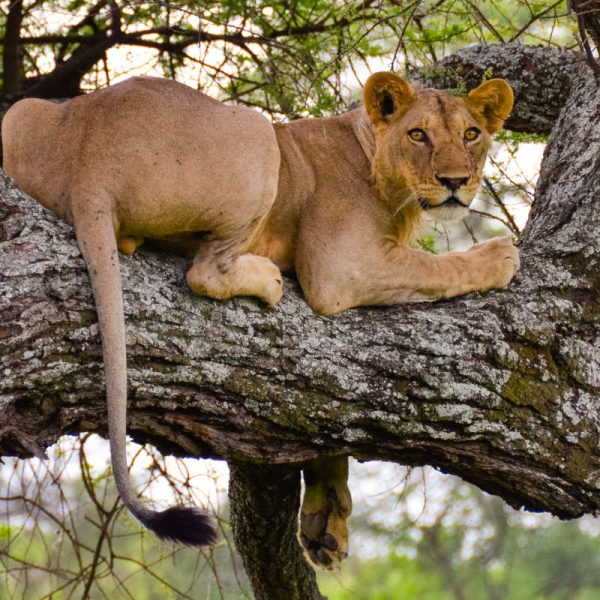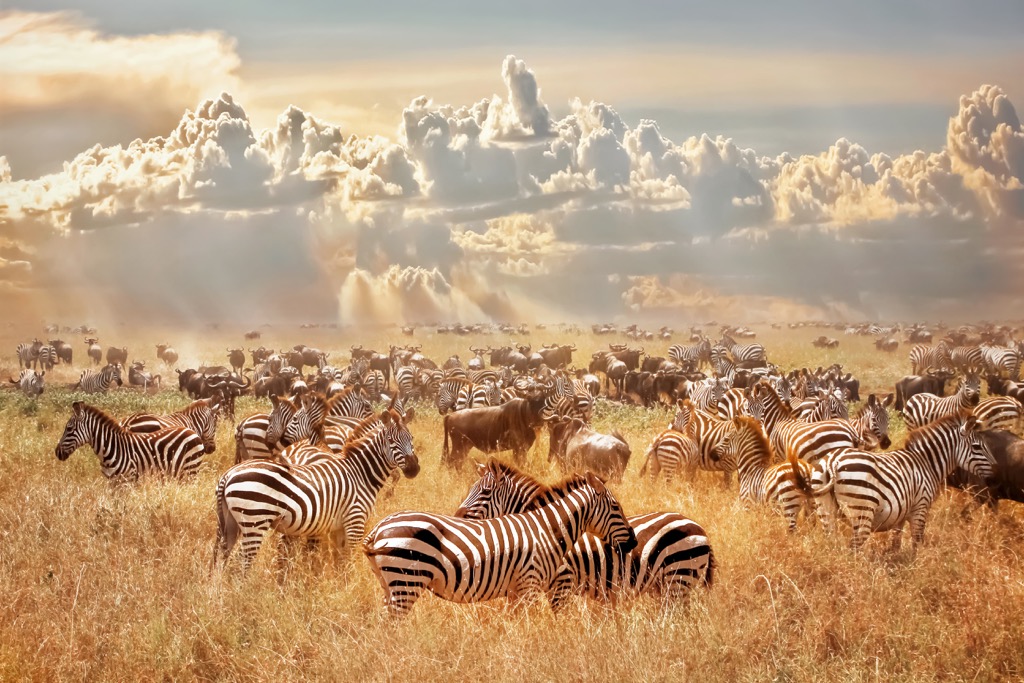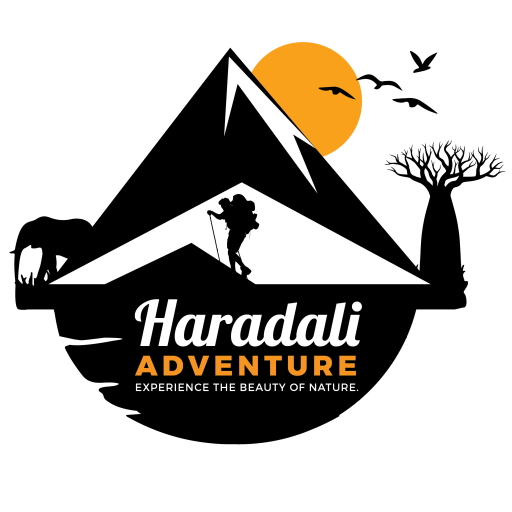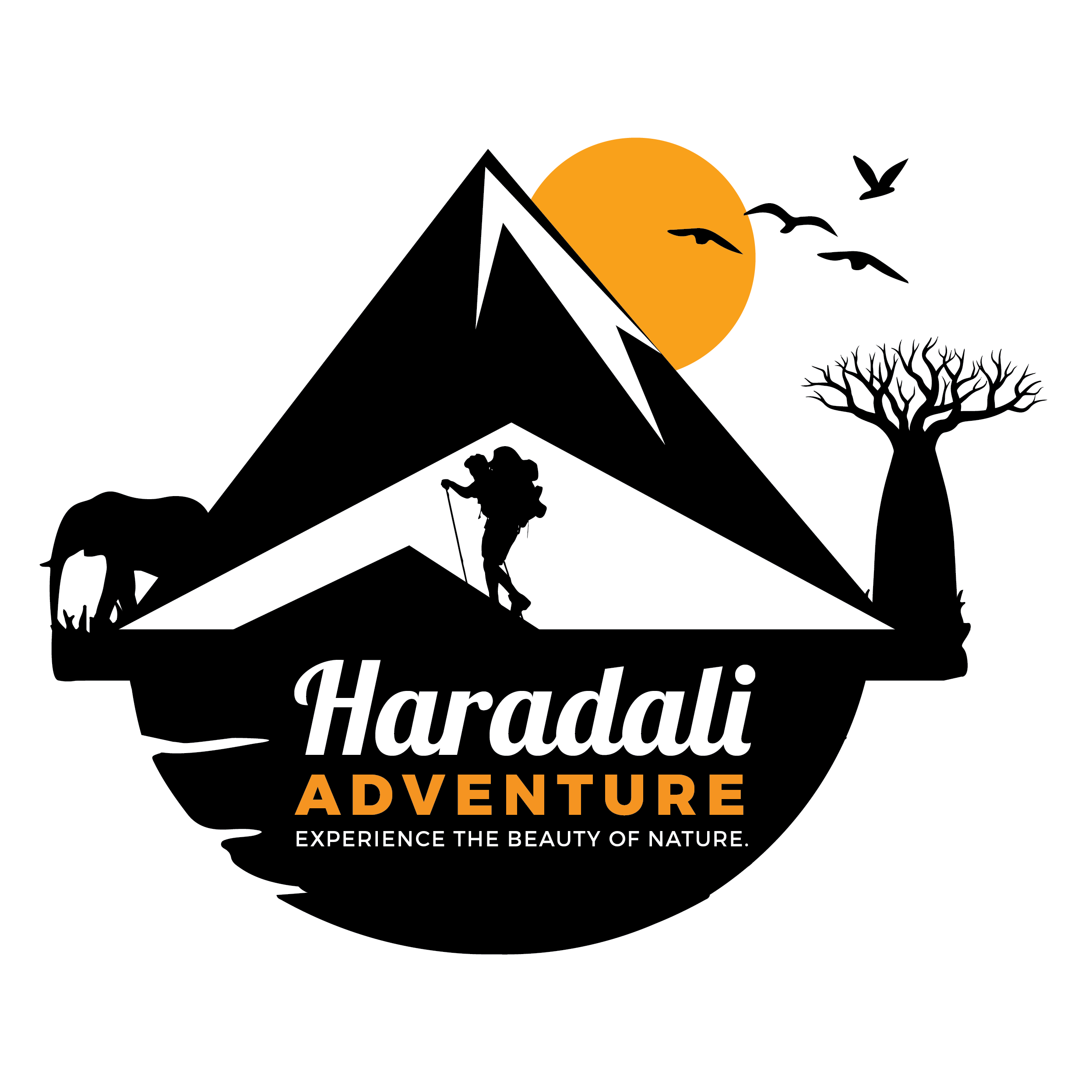Lake Manyara National Park
Lake Manyara National Park, nestled in northern Tanzania, is one of East Africa’s most enchanting and diverse wildlife destinations. Covering an area of approximately 330 square miles (850 square kilometers), this beautiful park is renowned for its breathtaking landscapes, unique wildlife, and the vibrant, saltwater-rich Lake Manyara. With its diverse ecosystems ranging from lush forests to open grasslands, the park offers an extraordinary safari experience unlike any other.
A Park of Many Faces: From Forests to Flamingos
Lake Manyara is a truly multifaceted park, offering a blend of dense forest, soda lakes, and savannah. Its extraordinary diversity makes it an excellent microcosm of Tanzania’s varied ecosystems. Whether you’re watching elephants in the acacia woodlands, tracking leopards in the forest, or marveling at the spectacular birdlife on the lake’s shores, each moment spent in Lake Manyara reveals something new and awe-inspiring.
Flamingos & The Great Rift Valley
The Flamingo Spectacle
Lake Manyara is famous for being one of Africa’s most important breeding grounds for flamingos. The park’s alkaline lake is home to hundreds of thousands of these magnificent birds, creating an incredible pink-hued spectacle on the water’s edge. The sight of thousands of flamingos feeding and preening along the shores is one of the most iconic views in Tanzania’s natural landscape.
The Rift Valley View
The park is located along the dramatic Great Rift Valley escarpment, offering stunning panoramic views of the valley floor below. Whether you’re gazing at the flamingos in the lake or marveling at the picturesque landscape from above, Lake Manyara provides the perfect backdrop for unforgettable memories.

Rich Wildlife Encounters: A Safari Like No Other
Elephants & Tree-Climbing Lions

Lake Manyara is renowned for its abundant wildlife, including large herds of elephants that roam the park’s forests and open savannah. The park is also famous for its tree-climbing lions, a rare and fascinating behavior that you can observe only in a few places in the world. Whether you’re on a game drive, a walking safari, or just exploring the park’s diverse habitats, the wildlife encounters here are nothing short of incredible.
Leopards & Giraffes
For those seeking a safari experience beyond the Big Five, Lake Manyara delivers with its elusive leopards, graceful giraffes, and herds of wildebeest, zebra, and buffalo. This diverse collection of wildlife allows visitors to experience a cross-section of East African fauna, all within the park’s easily accessible boundaries.
A Birdwatcher’s Paradise
Lake Manyara is a paradise for bird lovers, with over 400 species of birds calling the park home. From the flamingos that fill the skies over the lake to the colorful hornbills, eagles, and herons, the park is an unmissable destination for those looking to tick off bird species. Whether you’re on a guided birdwatching walk or simply pausing to observe the avian wonders from your lodge, the birdlife here will amaze you.

A Seasonal Adventure: Best Time to Visit
Dry Season (June – October)
The dry season is the most popular time to visit Lake Manyara National Park, as the game viewing is at its peak. With the park’s water sources concentrated in a few locations, wildlife congregates around the lake and rivers, creating dramatic scenes of elephants, giraffes, and buffalo in their natural habitat.
Green Season (November – April)
While the green season offers lush landscapes and vibrant birdlife, it’s also a time when many migratory species are present. The park is less crowded during this time, offering a peaceful, more serene safari experience. The lush surroundings create a unique backdrop for photos and nature walks.
Why Lake Manyara is Unique
Lake Manyara is not just a place to witness incredible wildlife but an opportunity to experience the interconnectedness of nature in its purest form. From the unique tree-climbing lions to the breathtaking birdwatching opportunities, Lake Manyara offers a truly one-of-a-kind safari adventure. Its diverse landscapes, abundance of wildlife, and tranquil atmosphere set it apart from other parks in Tanzania.
A Wide Range of Safari Experiences
Game Drives
The classic safari game drive is an essential part of your visit to Lake Manyara. Whether you’re exploring the lake shores, the dense forest, or the open savannah, your expert guide will ensure you spot all the park’s incredible wildlife. The variety of terrains and ecosystems means you’ll have a chance to observe different species in their natural habitats.
Walking Safaris
For a more intimate experience, explore the park on foot. Guided walking safaris let you track animals, learn about the park’s ecosystems, and get up close to nature in a way that traditional game drives cannot offer.
Cultural Experiences
Visit nearby local villages and engage with the indigenous Maasai people to learn about their rich cultural heritage. The Maasai have lived in the region for centuries, and their unique traditions provide a fascinating contrast to the park’s wildlife.
Where to Stay: The Best Lodges & Camps
Lake Manyara offers a variety of accommodations, from luxury lodges perched on the escarpment with panoramic views of the park to more budget-friendly options and intimate tented camps. No matter where you choose to stay, you’ll be surrounded by nature, with the sounds of the African bush keeping you company.
- Luxury Lodges: Elegant and comfortable, these lodges offer all the amenities you’d expect for a premium experience.
- Budget Accommodations: Tented camps and budget lodges offer a more rustic, but equally memorable, experience.
- Exclusive Camps: Experience the wilderness in style at private camps offering all-inclusive services.
Plan Your Adventure to Lake Manyara
Lake Manyara offers an unforgettable African adventure. Whether you’re looking for the ultimate wildlife encounter, breathtaking landscapes, or a chance to connect with nature on a deeper level, this park has something for everyone.
Why Visit Tanzania?

Tanzania is home to some of the world’s most iconic destinations, including:
- Serengeti National Park: Known for the Great Migration and incredible wildlife.
- Ngorongoro Crater: A UNESCO World Heritage site and one of the best places to see the Big Five.
- Mount Kilimanjaro: The highest peak in Africa, offering various trekking routes.
- Zanzibar: A tropical island paradise with pristine beaches and rich history.
No matter when you visit, Tanzania offers unparalleled opportunities for adventure, nature, and culture.
Best Time to Visit Tanzania

The best time to visit Tanzania depends on your experience preferences. For wildlife safaris, the dry season from June to October offers the best game viewing, while January to February is ideal for the Great Migration calving season in the Serengeti. If you’re climbing Mount Kilimanjaro, the best months are January to March and June to October for clear skies. Zanzibar’s beaches are perfect from June to October and December to February. Avoid the long rains (March to May) when some lodges close, though the landscape is lush and less crowded.
Understanding Tanzania's Seasons

Tanzania has two primary seasons: the dry season and the wet season. The timing of your trip will depend on your preferred activities, whether you want to enjoy wildlife safaris, beach vacations, or mountain trekking.
Dry Season (June to October): Best for Safaris and Wildlife Viewing
The dry season in Tanzania typically lasts from June to October. This is the most popular time for safaris, as it coincides with excellent wildlife viewing conditions. The dry season is ideal for those interested in seeing large game, including the Big Five.
- Weather: Warm and sunny, with temperatures ranging from 25°C (77°F) to 30°C (86°F). Nights are cooler, especially in higher altitudes like the Ngorongoro Crater.
- Wildlife: During this period, animals congregate around waterholes, and vegetation is sparse, making wildlife easier to spot. This is also the time to witness the Great Migration in the Serengeti, especially from July to October, when thousands of wildebeest cross the Mara River.
- Why Visit: Ideal for a safari experience with clear skies, fewer mosquitoes, and the best chance of seeing a variety of wildlife.
Wet Season (March to May): Best for Lush Landscapes and Fewer Crowds
The wet season in Tanzania occurs from March to May. While the rain can make certain roads impassable, the wet season also offers a unique and quieter experience for those willing to brave the conditions.
- Weather: Expect heavy rainfall, especially in April and May, with temperatures ranging from 23°C (73°F) to 28°C (82°F). Rain showers are usually short but intense.
- Wildlife: The wet season is not the best for wildlife viewing, as animals spread out across the park in search of food. However, the lush greenery makes the landscapes incredibly beautiful, and birdwatching is at its peak.
- Why Visit: Ideal for visitors looking to avoid the crowds and enjoy a more serene, peaceful experience. This is also a great time to visit the beaches of Zanzibar, where the rainfall is less intense compared to mainland Tanzania.
Shoulder Seasons (January to February): Best for Calving Season and Mild Weather
The shoulder months of January and February are between the wet and dry seasons. These months offer mild weather and excellent opportunities to see the wildebeest calving season in the Serengeti.
- Weather: Warm but not too hot, with temperatures around 24°C (75°F) to 30°C (86°F). There is less rain compared to the wet season, making it a great time for outdoor activities.
- Wildlife: January and February are prime months to witness the Great Migration’s calving season in the southern Serengeti. This is a thrilling time for wildlife enthusiasts, as you’ll see thousands of wildebeest give birth, attracting predators like lions and cheetahs.
- Why Visit: Perfect for those looking to witness one of nature’s most incredible events—the birth of wildebeest calves—and enjoy pleasant weather for trekking and other activities.
The Best Time to Visit Tanzania Based on Activities

Safari in Serengeti and Ngorongoro Crater
- Best Time: June to October (dry season)
- Why: This is when the animals are easier to spot due to the dry conditions and fewer places to hide. It also coincides with the Great Migration in the Serengeti, which is a once-in-a-lifetime experience.
Climbing Mount Kilimanjaro
- Best Time: June to October (dry season) and January to February (shoulder season)
- Why: The weather is clearer during the dry season, providing better trekking conditions. If you’re planning to summit Kilimanjaro, these months offer the least amount of rain and the best visibility.
Zanzibar Beach Holiday
- Best Time: June to October (dry season) and December to February (shoulder season)
- Why: The dry season provides the most pleasant conditions for lounging on Zanzibar’s beautiful beaches. December to February is also a good time if you want to avoid the peak season crowds but still enjoy sunny weather.
Accommodation Options in Tanzania

Tanzania offers a wide range of accommodations to suit different budgets, from luxurious lodges in the Serengeti to more affordable campsites in Ngorongoro.
- Luxury: Four Seasons Safari Lodge Serengeti, Ngorongoro Crater Lodge
- Mid-Range: Serengeti Serena Safari Lodge, Ngorongoro Sopa Lodge
- Budget: Mbugani Tented Camp, Simba Campsite




